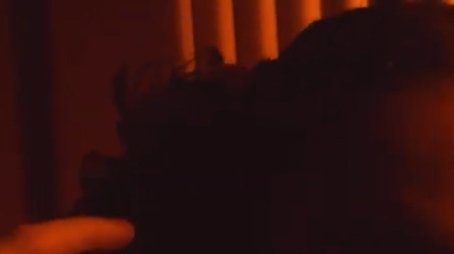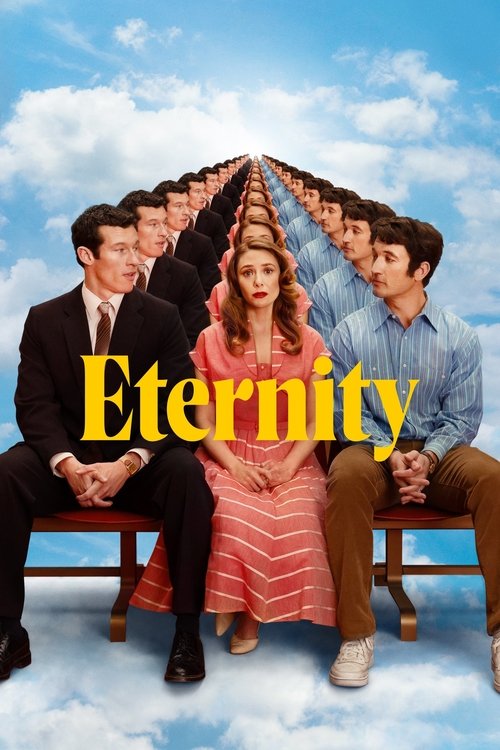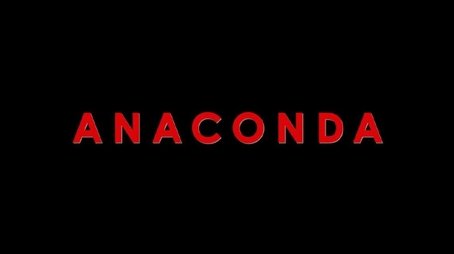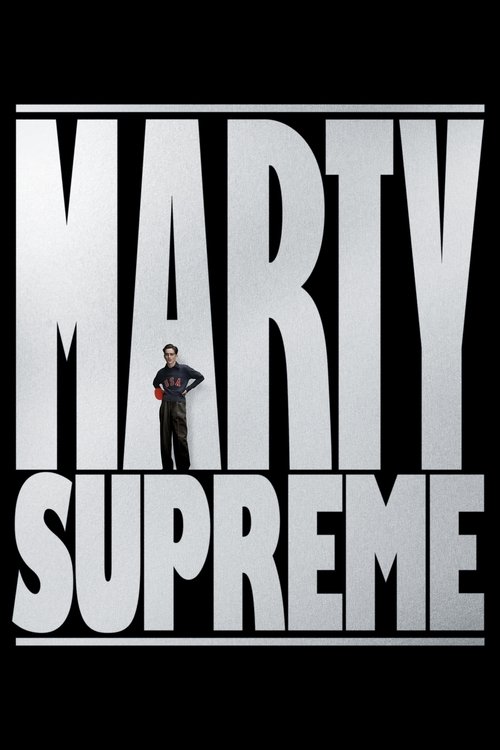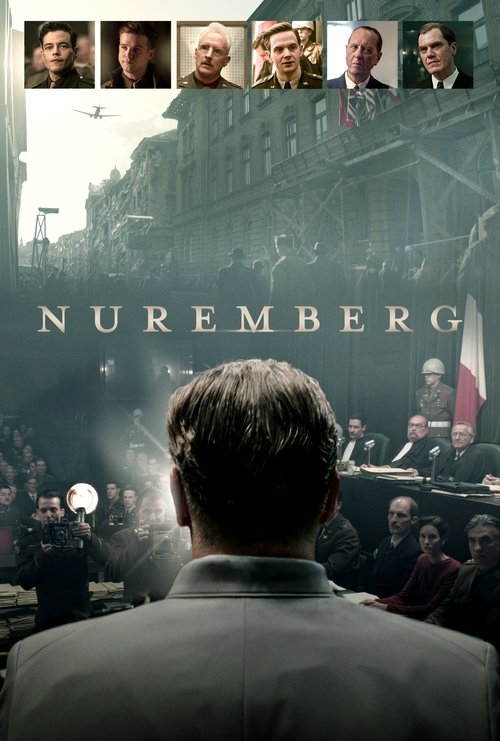
Ask Your Own Question
What is the plot?
In 1920, in the forests around Srikakulam, a small tribal kingdom confronts British forces who arrive to force the tribe from their lands and begin mining for gold. The tribe's king rallies his people to resist the soldiers, but the confrontation ends in slaughter. The king dies in the chaos. Before he dies he withholds a secret: he does not tell the survivors that the tribe will one day be saved by a prophesied descendant who will return in a future age. The survivors scatter; decades pass with that promise unspoken.
Jump to 1990. Byreddy Surya, known as Suri, works as a constable in India. He is young, aggressive on the job but polished in manner. As a boy he shared a violent childhood with his elder brother Siva: one night, after years of abuse by their father, Suri kills him. Siva takes responsibility for the patricide to protect his brother; because of that confession the two boys are separated by the authorities and grow up apart. In adulthood Suri remains in the police, and the Research and Analysis Wing handler Jayaprakash, called JP, recruits him for a covert mission. JP briefs Suri that intelligence has picked up a large consignment of arms and a shipment of gold moving from Hong Kong toward an island called Divi, a heavily fortified outpost off Sri Lanka. The operation must be run amid the Sri Lankan civil war and takes place only months after the assassination of Rajiv Gandhi; JP wants Suri to infiltrate Divi and obtain precise details about the arms and the gold at the heart of a Sri Lankan cartel.
Divi lives under the iron hand of Odiyappan, a Sri Lankan cartel boss from a Tamil-speaking family who rules the island and its trade. Odiyappan's younger son, Murugan, enforces his father's will with brutality; Odiyappan also has an elder son named Sethu. To get inside Divi Suri engineers a deliberate disturbance at a temple festival on the mainland. He starts a brawl that draws police attention, fights with the local crowd and gets himself arrested. JP's plan requires Suri to be sent to Jaffna prison, a notorious facility where the law rarely controls the inmates. Once inside Jaffna, Suri discovers that his long-absent brother Siva has become a leader among a community that has resettled on Divi--descendants of the 1920 survivors who fled British persecution. The reunion in the brutal confines of Jaffna prison is tense: Suri stands in a cell opposite the man who once took the blame for murder to save him. The two brothers meet again under bars and violence.
Suri begins to win influence in the prison hierarchy through deliberate action and displays of competence; he gains Siva's guarded trust. Siva, who commands a band of men, arranges bail for several members of his group and for Suri as well. Once freed, Siva's gang escorts Suri to Divi. On the island, Suri witnesses the daily oppression that Odiyappan's cartel visits on locals: extortion, forced labor, threats and arbitrary violence. He learns the island's geography--mangrove channels, timber docks, fortified compounds--and the cartel's smuggling routes. Suri reports regularly to Dr. Madhu, an Indian physician who operates on Divi as a doctor while secretly sending information back to JP; Madhu becomes Suri's handler on the ground, passing updates and receiving coded transmissions.
Siva recruits Suri into his gang's smuggling runs to prove Suri's loyalty and to test the new arrival. During one operation to move a consignment of gold through the mangrove channels near Jaffna, Sri Lankan navy patrols spot the smugglers. A fast chase unfolds through narrowing waterways. Suri helps to steer a canoe through the crabbed roots and tries to keep the gold moving, but the navy's gunboats cut off their escape. Under fire and with gunshots thudding overhead, Suri and the gang have to abandon a cache of gold to escape; they run through the mudflats and lose the shipment. At a subsequent cartel meeting, Murugan reads the navy's intervention as evidence of betrayal or a leak, and he begins to suspect that someone among the smugglers has informed the authorities. Tension thickens. Suri understands the political stakes: the cartel will punish any hint of treachery.
Determined to repair the damage and to solidify his cover, Suri volunteers to recover the lost gold from a naval depot. He proposes a daring plan to break into a Sri Lankan naval base and retrieve enough of the consignment to satisfy Odiyappan's men. JP supplies intelligence and Madhu helps coordinate. Under cover of darkness, Suri infiltrates the naval storage yard, slips past sentries, and uses small tools and stealth to move a crate of gold out from under guard. He returns the recovered consignment to Divi. The residents greet him as a hero; the cartel hears the story and the people in the compound celebrate Suri's success. His standing among Siva's followers rises, and those who doubted him ease their suspicions. In the course of the break-in and the return, Siva learns Suri's true background: through Suri's contacts, through the way he handles intelligence tasks and through information Madhu passes along, Siva realizes that the man he brought from Jaffna is an Indian police officer planted by RAW. The reveal hits Siva hard; he confronts Suri privately about the betrayal and the two brothers struggle with loyalty, duty, and the history of their shared past.
Murugan's paranoia escalates. After the navy chase he begins to believe a mole operates in the cartel's midst. He searches for scapegoats and starts purging those he suspects will betray the route. Convinced that one of the Byreddy brothers--Suri or Siva--might be the leak, Murugan hunts for proof. Unknown to Siva and Suri, JP has embedded multiple informants inside Divi's hierarchy to feed him information; one of the cartel's deputies, Selva, actually works as an informant for JP. Selva collects scraps of evidence and hands them up the chain. At a gathering of cartel leaders, Selva passes on circumstantial materials--intercepted notes, reports of suspicious activity and mentions of Suri's actions--to a senior member named Saravanan. Saravanan, an old hand in the cartel, accepts the evidence and brings it to Murugan. With those fragments, Murugan constructs a narrative of betrayal that points to the Byreddy brothers.
Murugan's mistrust hardens into violence when he murders his own father, Odiyappan. In a private confrontation at Odiyappan's compound, Murugan strikes first--he stabs Odiyappan in the torso and presses the blade until his father falls. The killing shocks the island; Murugan tells his men that his father's death proves the depth of the threat and that he must root out all traitors. He summons the people of Divi to attend Odiyappan's last rites and calls for a feast at his house to mark the funeral rites publicly. He brings Siva and his family to the ceremony, knowing that suspicion now hangs heavy over them. Before the feast, Siva's deputy Singha grows increasingly wary of Suri's story. Singha tells Siva he will go to the mainland to look into Suri's background and leaves Divi to investigate.
During the funeral gathering, Selva presents the circumstantial evidence to Saravanan and to Murugan's inner circle. Murugan, fueled by accusations and convinced that one of the Byreddy brothers is the mole, orders a confrontation. He drags Siva forward and accuses him of spying. Siva responds in a voice that aims to protect others: he declares that he is the traitor. He takes the blame even though he knows Suri bears the deeper secret. Murugan answers with cold, brutal force. He seizes Siva and, in full view of the compound, murders him. Murugan grabs Siva by the collar, pulls out a knife and stabs him repeatedly in the chest and abdomen until Siva collapses. Murugan does not stop there; he commands his men to execute members of Siva's group. The cartel's enforcers open fire with rifles and pistols, shooting at those who step toward Siva's side. Siva's wife, Suguna, tries to shield other people and is struck down by a burst of gunfire to the torso; she falls and dies as bullets tear through the throng. Men are beaten with iron rods and shot; the compound becomes a slaughterhouse of blood and bodies. Many of Siva's followers are cut down: some shot to death in the courtyard, others chased into the mangroves where they are hunted and killed with knives. Murugan's purge leaves dozens dead, and Divi reels under the atrocity.
Suri does not know the full extent of the massacre when he spends the night drinking alcohol for the first time in his life. In a private moment with Dr. Madhu, his voice slurred by the unaccustomed liquor, he confesses what he has hidden since childhood: it was he who killed the brothers' abusive father; Siva had accepted the blame to protect him. Madhu listens and then, the next morning, brings Suri the news in a hushed, clinical voice: Siva and many in his household were murdered by Murugan and his men during the funeral rites. Suri absorbs the information with a physical reaction--anger that hardens into a plan for retaliation. He moves from grief to action.
Suri moves swiftly and without hesitation. He leverages everything he learned about Divi's geography and cartel routines to prepare an uprising. He assembles the remaining villagers and any loyalists who survived the massacre. He arms them with what they can find--machetes, farm implements, a few pistols recovered from fallen cartel goons--and organizes nighttime assaults on the cartel's outposts. Suri leads hit-and-run strikes: he and a small team cut power lines to Murugan's compound, set small fires to blind lookouts, and use the mangrove trails to ambush patrols. He slips into storerooms to unlock caches of weapons and distributes ammo among his assembled fighters. He coordinates attacks that isolate Murugan's lieutenants--he sends teams to blockade supply routes, another to burn boats used for smuggling, and one to storm the radio room so the cartel cannot call for reinforcements.
In the decisive confrontation Suri advances on Murugan's men at dawn. He walks through smoke-filled lanes as the island erupts in pitched skirmishes. First he kills Saravanan, cornering him in a warehouse and shooting him at close range with a pistol to remove a senior enforcer. Then Suri moves toward Murugan's stronghold. He engages Murugan's front-line thugs in hand-to-hand combat: he disarms one attacker with a sweeping kick, wrests a rifle from another's hands and shoots him, uses a jagged piece of metal to cut a man who lunges with a knife. He keeps pushing forward until he stands before Murugan inside the compound's central hall. The two men face each other surrounded by the groans of the wounded and the cries of the islanders.
Murugan reaches for a rifle and fires at Suri, but Suri leaps aside, the shot tearing wood from a pillar. He charges, grabs Murugan's wrist and twists; during the struggle Murugan drops his weapon and pulls a concealed knife. Suri parries with the forearm and wrestles the blade away. In a brutal exchange he slashes Murugan's shoulder and then drives the knife into Murugan's abdomen. Murugan staggers, falls to his knees, tries to crawl for the edge of the hall, and Suri kneels and drives the blade again. Blood pours through Murugan's shirt; he gurgles and reaches out as Suri withdraws the knife. Murugan dies on the floor of his compound, his fingers clawing at the soil. Around them, Murugan's remaining men either flee or are captured by islanders now emboldened to fight. Suri's hands are bloody from the close combat; he rises and looks at the bodies of the men who killed his brother and slaughtered his people.
After Murugan's death the island gathers in the compound courtyard. Villagers come forward to remove the dead, to tend wounded survivors, and to strip weapons from the fallen cartel members. The people who remain choose a leader; they turn to Suri and acclaim him as their protector. He accepts the role: he steps forward, addresses the crowd, and takes charge of restoring order, reallocating supplies and preventing vengeance killings. Suri stands at the center of Divi as the man who toppled the cartel's brutal enforcer, and the residents begin to call him their king--the prophesied descendant returned to deliver them long after the tribal king died in Srikakulam decades earlier.
The events do not end in calm. Word of the massacre and the death of Murugan reaches the mainland and beyond. Sethu, Odiyappan's elder son and Murugan's older brother, learns that his brother has been killed and that the cartel's structure on Divi has been shattered. He travels to Divi with a contingent of men to avenge his family. Sethu arrives on the island, his face hard with grief turned to a hunger for revenge; he moves ashore in a flotilla and prepares to reclaim power, bringing with him men ready to kill. Suri, now leader, sees Sethu's boats docking on the horizon.
Meanwhile, Singha--Siva's old deputy who left Divi to investigate Suri's background--finds his way to Ankapur, to the house where Siva once lived with his wife Suguna and where Suri has left some traces of his life. Singha searches the rooms for proof and finds a photograph of Suri in his police uniform pinned in a drawer. He studies the image: the badge, the rank on Suri's shoulder, the Byreddy name. The photograph confirms that the man who has become Divi's leader once served as an Indian constable. Singha holds the picture and realizes that the story of Suri's infiltration may have deeper layers than the island's survivors yet know. As Singha looks up from the photograph, the film draws to a close on the image of Suri's uniformed face and on the silhouette of Sethu's boats approaching the island--an end that secures the new order on Divi while leaving the prospect of further conflict open.
What is the ending?
The movie Tether (2025) ends with Leonard and Gerald, two men bound by the trauma of a school shooting, confronting their shared grief and guilt through therapy and a difficult personal encounter. Leonard begins to move toward understanding and reconciliation, both with his estranged wife Amanda and with Gerald, who is haunted by his own failure during the tragedy. The film closes on a note of tentative connection and the possibility of healing, though the pain remains palpable.
Expanded narrative of the ending scene by scene:
The final act opens with Leonard attending a therapy session, where the therapist gently guides him to confront the layers of his guilt and anger. Leonard's demeanor is tense but gradually softens as he acknowledges his own emotional repression. Meanwhile, Gerald, the former school resource officer who froze during the shooting, is also shown in therapy, struggling with severe depression and self-loathing. Both men are linked by their sessions with the same therapist, who serves as a catalyst for their eventual confrontation.
Leonard and Gerald's paths cross again outside therapy. Leonard initially approaches Gerald with rage, blaming him for failing to protect the children, including Leonard's daughter. The encounter is charged with raw emotion--anger, fear, and sorrow intertwine as Leonard voices his pain. Gerald, overwhelmed by guilt, does not defend himself but instead reveals his own torment and the darkness he has been battling since the tragedy.
As the conversation unfolds, Leonard's hatred begins to waver. He sees that Gerald's life has not moved on either; Gerald is a broken man, haunted and isolated. This moment is pivotal: Leonard's perspective shifts from blame to a reluctant empathy. The two men, tethered by the same trauma, recognize their shared suffering.
The film then cuts to Leonard attempting to reconnect with his estranged wife Amanda. Their interactions remain strained but show signs of thawing. Amanda's earlier threat to leave has pushed Leonard to seek therapy and begin healing. The couple's tentative steps toward reconciliation underscore the personal cost of grief and the difficulty of moving forward.
The closing scenes are quiet and intimate. Leonard and Gerald, no longer adversaries but fellow survivors, share a moment of understanding. The therapist's words echo as a reminder that grief has no right or wrong path, and that healing is a complex, ongoing process.
In terms of character fates:
- Leonard moves toward emotional healing and reconciliation with Amanda, though the scars of loss remain.
- Gerald remains deeply troubled but begins to confront his depression and guilt, no longer entirely isolated.
- Amanda, while emotionally drained, stays engaged with Leonard, suggesting hope for their relationship.
The ending does not offer neat resolutions but instead presents a somber, realistic portrayal of trauma's aftermath, emphasizing the human need for connection and closure despite enduring pain.
Is there a post-credit scene?
The movie titled Tether produced in 2025 does not have a post-credits scene. There is no information or indication from available sources that Tether includes any extra footage or scenes after the credits. Audiences can leave the theater once the credits begin without missing additional content.
What is Leonard's relationship with his wife like as they try to reconcile after their daughter's death?
Leonard, the grieving father, seeks solace in reconciling with his wife after the death of their daughter in a school shooting. Their attempt to reunite is a significant part of the story, showing their struggle to cope with grief and loss together.
How does Leonard's encounter with Gerald, the ex-school resource officer, affect both characters?
Leonard crosses paths with Gerald, the clinically depressed ex-school resource officer who froze during the school shooting and is blamed for not preventing it. Their meeting causes their downward spirals to converge, forcing them to confront the darkness their encounter may unleash.
What role does Gerald's clinical depression and guilt play in the story?
Gerald is portrayed as clinically depressed and burdened by guilt for freezing during the school shooting. His mental state and the blame he faces are central to his character arc and the tension that arises when he meets Leonard.
How are Leonard's memories of his daughter depicted in the film?
The film includes heartbreaking snippets of home movies of Leonard's daughter sprinkled throughout, which contribute to the emotional depth and illustrate Leonard's desperation and grief.
What internal conflicts do the main characters face regarding the normalization of school shootings?
Both Leonard and Gerald struggle with internal conflicts about why such tragedies have become normalized in society. The film explores their trauma and the societal passivity toward these events, adding complexity to their personal journeys.
Is this family friendly?
The movie Tether (2025) is not family friendly and contains potentially upsetting content for children or sensitive viewers. It deals with heavy themes including the aftermath of a school shooting, grief, depression, and emotional trauma. These aspects may be distressing without revealing specific plot details.
Potentially objectionable or upsetting elements include:
- References to a tragic school shooting and its emotional impact.
- Themes of grief, depression, and psychological struggle.
- Intense emotional scenes involving loss and trauma.
There is no indication that the film contains explicit violence or language, but the subject matter itself is serious and likely unsuitable for younger audiences or those sensitive to trauma-related content.

